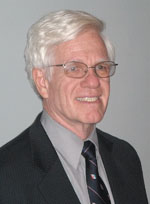UnityNet Offers Information Sharing Boon
Open information sharing in diverse environments is critical. A new initiative in 
UnityNet’s goal is straightforward: networking people together in a unity of effort for a common cause. The key points are people and unity of effort. This is not about technology; it is about changing behavior.
UnityNet addresses an urgent operational need. Key participants in
As the strategy in
The ISAF-led coalition thus must engage more effectively in this environment, and this is where UnityNet is focused. Part of this is knowledge management, but bandwidth also needs to be increased because Internet access in the field is limited for ISAF, Defense Department and intelligence units as well as for civilian players. Facilitating communications among civil and military government entities, as well as with civilian and Afghan partners, requires an integrated information and connectivity initiative.
In this context, UnityNet can encourage a self-sustaining, open-sharing environment that can help connect economically disadvantaged populations to the global community via the Internet. The underlying tenets are straightforward: First, open information empowers and informs populations to take action on their own behalf. Second, an informed populace, supported by an informed international community, is more likely to make better choices for its cultural, socio-economic and governance challenges.
Clearly, there are issues. Some NGOs never will share directly with militaries. Legitimate security issues also must be addressed. But the possibility that opponents also may use open information must not be allowed to derail all progress. Overall, the benefits of information sharing outweigh the risks in a population-centric approach.
UnityNet would leverage wired and wireless networks, along with mobile phones, to connect people to the Internet, leveraging open-source tools and knowledge-sharing approaches. The ability to share imagery is especially important for providing context and enabling better situational awareness. UnityNet also can provide an open-source data-sharing repository and coordination platform for humanitarian efforts. The goal is to help move the population-centric information that is in people’s minds, notebooks and disconnected computers onto the Internet so that it can be discovered and shared for maximum benefit.
The Consolidated Stability Operations Center (CSOC) near
Building on the terrific work done in Jalalabad by the Synergy Strike Force, Rotary, NGOs and others, a total of five sites have been identified for initial UnityNet deployment. A central training location will be set up, and nimble contracting vehicles are being sought.
UnityNet reflects growing recognition that Internet access is a must-have core operational capability to keep people in near-constant communication, not merely a support function—such as mainly for morale, welfare and recreation. Enabling others to share information in near real time can reduce the need to send people into harm’s way to collect it. At the same time, to take responsible advantage of the opportunities these information sharing capabilities offer, organizations at all levels need to set up the kind of cloud, bridge, filter and channel models that characterize open-source information exploitation.
The importance of imagery and imagery-derived products cannot be overstated. They are foundations for UnityNet, just as they were in Haitian relief efforts. Senior officials are working to have Defense Department-funded airborne images released without restrictions that would make them unsharable with NGOs and most other civil-military mission participants. These officials also are working with the National Geospatial-Intelligence Agency and commercial data providers to make commercial satellite imagery more releasable to support stability operations. The open-technology community stands ready to provide support as mapping data become available.
Now think of how you can support UnityNet-like approaches.
Linton Wells II is the director of the Center for Technology and National Security Policy (CTNSP) in the Institute for National Security Studies and a distinguished research professor at the



